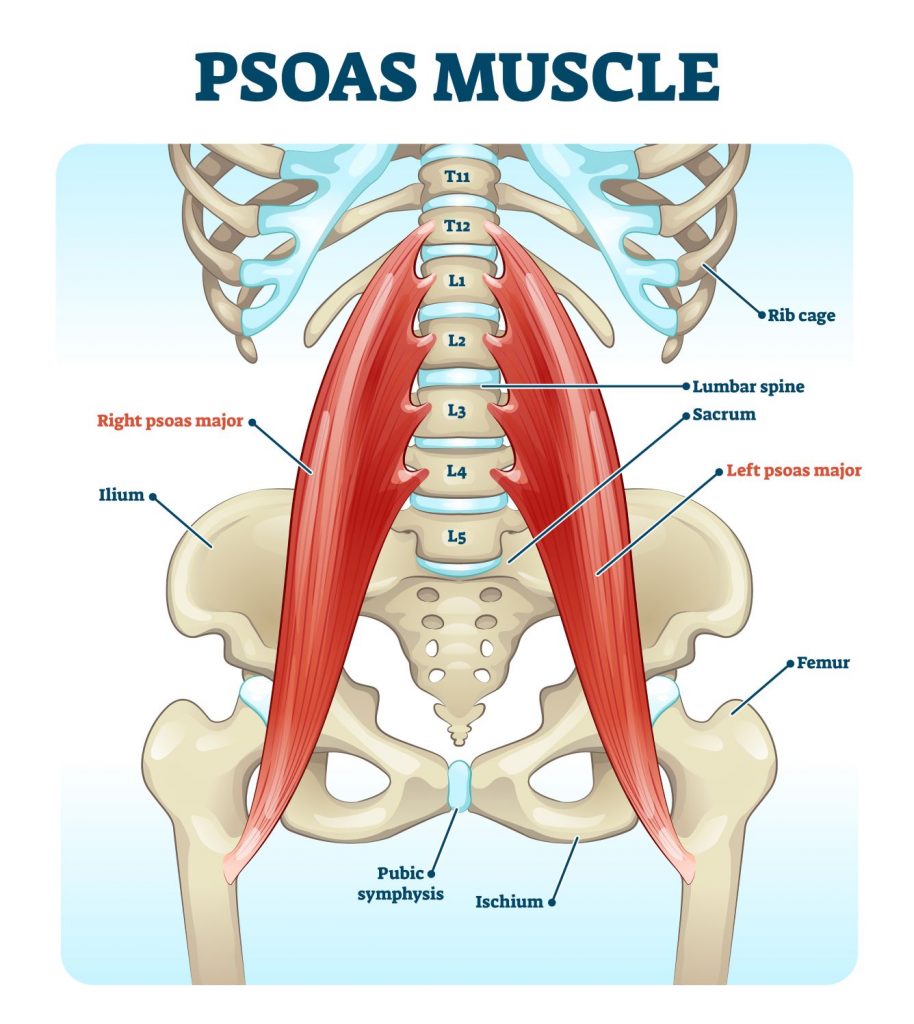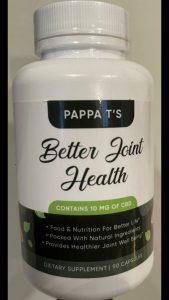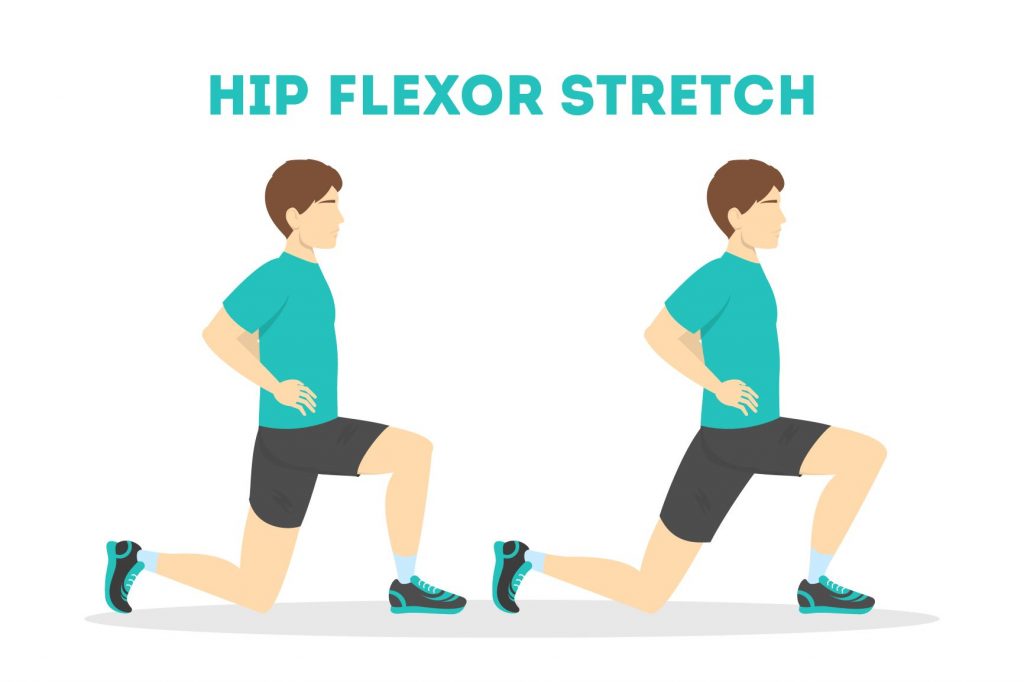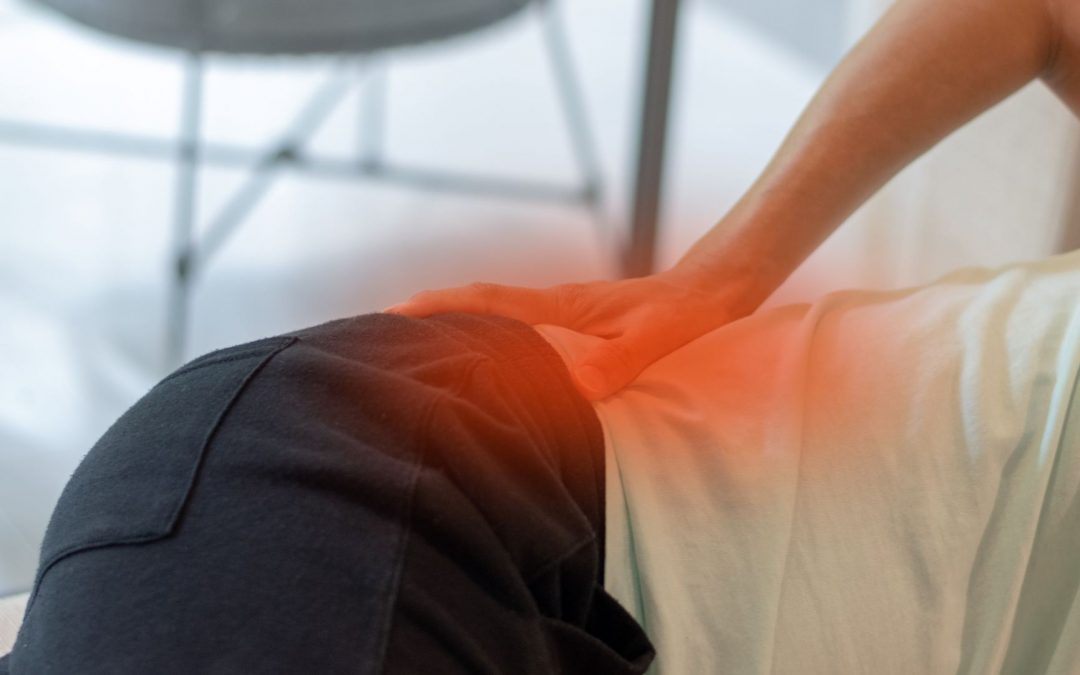How to treat hip flexor pain or any kind of joint pain for that matter can be a bit challenging if you don’t know much about it. So, 1st let’s explore and understand what a hip flexor pain is.
The hip flexors are the connection and collection of muscles toward the front of the hip. They help you move or flex your leg and knee toward your body. A hip flexor strain occurs when one or more hip flexor muscles are stretched or torn. Hip flexor pain and tension usually occur when the hip flexor muscles are pulled, strained, torn, or injured. Various activities can cause the condition, and the main symptom is acute pain. Damage to the hip area can range from minor injuries that require little treatment to more severe injuries that prevent muscles from connecting with the bone.
The most severe hip flexor injuries are third-degree sprains where the bone is broken along with the muscle sprain. The hip flexors are found connecting the upper part of the femur, which is the largest bone in the body, with the lower back, hips and groin. Several hip flexor muscles work to allow a person to be mobile.
They include:
- the main iliac muscles and psoas, which are also called iliopsoas
- Quadriceps which consist of the longest bone in the body
Excessive or overuse of these muscles and tendons can result in injury and associated pain and reduced mobility.
What are your hip flexors?
Raising the knee towards the body requires many muscles, which are collectively known as the hip flexors. The main job of the hip flexors is to bring the knee towards the chest and bend at the waist. Symptoms associated with a hip flexor strain can range from mild to severe and can affect mobility. If you don’t rest and seek treatment, the symptoms of hip flexor strain may worsen. But there are many activities and home remedies that can help reduce the symptoms of hip flexor strain.
How does a hip flexor strain feel?
The main symptom of hip flexor tension is a pain in the front of the hip. However, there are many other symptoms associated with the condition. These include:
- pain that seems to come on suddenly
- increased pain when lifting the thigh towards the chest
- pain when stretching the hip muscles
- muscle spasms in the hip or thigh
- tenderness to the touch on the front of the hip
- swelling or injury in the hip or thigh area
- You may feel this pain when you run or walk.

What Causes Hip Flexor Strain?
Hip flexor tension occurs when you overuse the hip flexor muscles and tendons. As a result, the muscles and tendons swell, ache and hurt. Many people are more open than others to experience stress on the hip flexors. These include:
- cyclists
- dancers
- martial artists
- footballers in a soccer team
- football players
- step aerobics participants
Athletes who jump or run while performing knee-high kicks are also at increased risk of hip flexor fatigue. If you do deep stretches, such as pulling your thigh back, you are also more likely to experience strain on your hip flexors.
A hip flexor strain represents a tear in the muscles. These types of tears can range from mild to severe:
Hip injury
The more intense the injury, the higher the degree of rupture.
- Grade I: The person’s hip is still functioning correctly, but they feel a little amount of pain around the groin region.
- Grade II: the hip does not function as supposed but can manage to hold some weight; the hips pull out from time to time.
- Grade III: the person cannot tolerate any weight; the person is unlikely to walk appropriately. These tears go along with stress fractures, and the person must go to see an orthopedic doctor immediately.
Tendonitis
Hip abuse also causes hip tendonitis. To determine the difference between tendonitis and strains, it is necessary to know where the pain is coming from. If the pain in the front of the hip worsens when the knee is raised towards the chest, it is most likely a strain. If the pain occurs in the leg or even in the back, it is likely tendonitis. Hip tendonitis slowly worsens over time, while a strain or tear is usually immediate pain. Each client should stretch regularly to help prevent hip stiffness and alleviate any pain in the hip joint.
Hip tears
The acetabulum, known as the hip socket, is where the femur is located in the pelvis. The hip tissue covers this cavity and can be irritated by excessive rubbing and overuse of the hip joint. If this said tissue tears, it is known as a hip tear. Clicking or popping often accompanies lip tears, which cause pain in the hip and groin. A client’s facility can also play a role in these types of problems, but injuries and overuse are the common cause of these complications.
Causes of weak or tight hip flexors
Repetitive movement or overuse of the hip joint is a significant aspect of hip flexor pain. Weak or tight hip flexors cause injuries to the hip flexors. It is essential to know what contributes to the weakness or tension felt by the hip flexors. If a client sustains a direct hip injury, it can cause hip flexor injury, but overuse is the main reason for hip flexor strain.
- Sitting excessively
Stiffness in the hip flexors can result from excessive sitting and poor posture. If your client is sitting a lot during the day, the hip flexors remain in a flexed position for an extended period. This creates tension and leads to inactive hip flexor muscles. When muscles are static, they will atrophy and weaken. Weak hip flexors will cause more strain on the hip flexors.
Imagine a customer sitting all day and suddenly standing up. As long as they sat, the hip flexors were in a flexed position. In this angled position, the hip flexor muscles contract and relax. When the person stands up, the hip flexor muscles stretch rapidly, perhaps even more than the strength can support. As the hip flexor rapidly extends beyond the muscles’ threshold, it creates micro-tears in the muscles. Routine stretching will help prevent this, but you should know that any form of over-stretching can also be harmful to the hip flexor muscles. If your client stretches excessively, it can also create micro-tears in the muscles.
- Piriformis muscle
The piriformis is a joint muscle responsible for many hip problems. The piriformis muscle is a muscle inside the human body below the gluteus maximus. It is a small muscle that cannot handle the same stress that larger muscles can. Many clients have piriformis syndrome, which amplifies problems with the hip flexors. By sitting excessively, the buttocks become underactive and weak, leading to compensation of the piriformis. It is a thick but small muscle that can’t perform the same activities as the glutes. Therefore, a client will experience pain in the hips, relieved by hip flexor and piriformis flexibility exercises.
Treatment of hip flexor pain and strain
We recommend The Better Joint Health Naturally WITH CBD Capsules

Specially formulated for pain relief.
If a person experiences pain in the lumbar spine or buttocks, he should consider the tight hip flexors as the problem area. Implement corrective exercises in a client’s program to improve hip mobility and flexibility and relieve pain in the hip joint. To design an effective corrective exercise program to address hip flexor problems, start by dedicating your preparation for the opening movement of each workout to exercises that target these specific areas. Incorporates a combination of stretching, movement preparation exercises and foam rollers during your training.
- Rest
It is essential to rest the affected muscles if you suffer from strain on the hip flexors. One thing you can do is change your regular activities to avoid overstretching the muscle. For example, you can try swimming instead of riding a bike.
Home Remedies for Hips Strain
Most cases of hip flexor strains can be treated at home without the need for prescription drugs or more invasive treatments. Below are some home remedies that when implemented, can help relieve pain from hip flexor tension:
- Apply a cloth-covered ice pack to the affected area for 10–15-minute increments.
- Ice packs alternating with moist heat applications starting approximately 72 hours after the initial injury. These include heating patches, wet heating pads, or a warm, damp cloth. A warm shower can have a corresponding effect by reducing muscle tension.
- Take an over-the-counter pain reliever. Any of the following can help:
- acetaminophen (Tylenol)
- ibuprofen (Advil, Motrin)
- naproxen sodium (Aleve)
However, unless directed by your doctor, do not take these medications for more than ten days due to stomach bleeding risk.
- Rest and avoid activities that excessively use the hip flexors for 10-14 days after injury (or longer if directed by your doctor).
What other treatments are there?
In case of minor hip flexor injuries, people do not go to their doctor often, preferring to be treated at home. Some traditional ways to help treat hip flexor tension include:
- Rest your muscles to help them heal by avoiding activities that may cause additional stress.
- Wear a compression bandage around the area. These are available for purchase at the pharmacy.
- Apply an ice pack to the affected area. These are available for purchase at the pharmacy.
- Apply a thermal compress to the affected area. These are available for purchase at the pharmacy.
- A warm bath or shower.
- Over-the-counter pain relievers.
When taking these medications, it is essential to follow the instructions and not use them for more than ten days.
If the pain persists after ten days, the said person should make an appointment with their doctor to discuss alternative treatments.
- Exercises
Gentle stretching exercises can help reduce stress on the hip flexor muscles and reduce the likelihood of future injury. Try these hip flexor stretches, but make sure you don’t push too hard; these stretches should be gentle. You can help reduce the risk of hip flexor fatigue by applying moist heat and warming up your muscles with a gentle walk for about three minutes before stretching.
In severe cases
If the hip flexor strain is so severe that it causes a large muscle tear, your doctor may recommend that you see a physical therapist. Sometimes surgery may be recommended to repair the torn muscle. However, this is an infrequent event.
What is the outlook for a hip flexor tear?
The time it takes for a hip flexor to heal depends on the severity of the injury. Mild stress can take a few weeks to heal. But severe stress can take six weeks or more to heal, according to Summit Medical Group. The inability to rest and recover from a hip flexor strain usually only results in a worse injury and more pain later on. If your hip flexor strain causes you to limp or your symptoms do not improve after home treatments for seven days, call your doctor.
Exercises for the hip flexors pain and strain
While not everyone can have agile hips, we can benefit from strengthening the muscles that support our ball joint. Not only are our hips responsible for the swinging dance moves we occasionally perform, but they are also a vital area for runners, cyclists, and non-athletes. Most of the day, something most of us are guilty of, contributes to contraction of the hip flexors. Strained hip flexors can result in low back pain, hip pain, and injury. And the hip problems don’t end there. According to the American Academy of Orthopedic Surgeons, hip replacements are rising in the United States. They peak among middle-aged adults. To make sure you don’t break your body while making a move, or just walking down the street, here are nine excellent hip flexion exercises to keep your hip area healthy and flexible. The hip flexor is stretched.
Try these stretching exercises to loosen your hip flexors and joints:
- Seated butterfly stretch
This simple movement will stretch your inner thighs, hips and lower back. And you can do it while sitting!
- Rest your body on the floor with your back straight and your abs tight.
- Bring the soles of your feet together in front of you. Let the knees bend to the sides.
- As you pull your heels towards you, relax your knees and allow them to come closer to the floor.
- Take a deep breath and hold this position for 10-30 seconds.
- Pigeon pose
This famous yoga pose is an advanced movement. Do it only if you feel comfortable doing it. Feel free to change the posture.
- Begin in a plank position.
- Raise your left foot from the floor and slide it forward so that the knee is on the ground next to the left hand and the foot is next to the right hand. Exactly where your knees and toes will fall will depend on your flexibility.
- Move your right leg back as far as possible while keeping your hips square and low to the floor and elbows, bringing your upper body as far as possible.
- Maintain the stretch without dropping your chest. Once you feel like you’ve done a good stretch, switch sides.
- Bridges
It’s amazing what you can do while lying down. Like this bridge pose!
- Lie on your back with your arms at your sides, feet flat on the floor, and knees bent. Try to position your feet so that your toes can touch your heels.
- Press on your heels and lift your hips off the floor towards the ceiling as you squeeze your glutes. Try to move your shoulders as close as possible under your body.
- Maintain the position for a few seconds before changing to the original post, then repeat several times. Don’t forget to breathe!
- Lunges
- From an upright position, look straight ahead and take a significant step forward with your right foot.
- Bend your extended knee and move your weight to your right front leg.
 Continue to slowly lower into the lunge until your left knee either moves off the ground or kisses you gently. The right knee should be directly above the right ankle.
Continue to slowly lower into the lunge until your left knee either moves off the ground or kisses you gently. The right knee should be directly above the right ankle. - Return to the standing position. Repeat the pose with your left leg.
- Bodyweight squat with bands
- Slip a medium-strength rolled resistance band over your feet and place it just above your knees.
- Widen your feet and then make your hip-width apart, toes slightly outward. Tighten your abs – Your goal is to maintain this slight contraction throughout the exercise as you breathe.
- Keep your chest and head up, shift your weight towards your heels, squeeze your glutes, and push your hips back and down. As you lower your hips, keep pressing your knees out to maintain tension on the resistance band.
- Once your thighs are parallel to the floor, use your glutes to return to the starting position, continue to push your knees out and engage your core.
- Pause at the top and then repeat.
- Dead bug
- Rest on your back with your arms stretched forward in front of your shoulders, facing the ceiling.
- Bring your knees to a 90-degree angle. Tighten your abs and press your lower back against the floor.
- Take a deep breath and, as you exhale, slowly extend your left leg toward the ground and bring your right arm above your head.
- Keeping your abs tight, slowly bring your arm and leg back to the starting position.
- Repeat with the opposite arm and leg.
- Sliding climbers
Get sliding discs, paper plates, or even towels; practically everything flowing. Get ready to climb!
- Stand on a wooden floor or other smooth surfaces.
- Place your sliders under your toes while in the push-up position.
- Bring your right leg to your chest, alternating it with your left leg as you would with standard climbers.
- Go slow at first, then pick up the pace.
- Skater squat
This movement is similar to regular squats, with a fit explicitly targeting the hips.
- Lower from the knee and hips, lowering your glutes toward the floor while keeping your back straight and chest elevated.
- After each squat, shift your weight onto your right or left leg as you lift your opposite leg to the side with your toes pointing forward.
- Switch legs each time.
- Rest on your back with your palms at your sides. In turn, extend each leg up and off the ground for about 2 seconds.
- Keep your leg at an angle of about 45 degrees. The opposite leg should be bent at the knee with the foot flat on the ground, while the raised foot should keep the toe pointed skyward.
- Switch legs, then repeat ten times on each leg.
- Psoas wall bracket
This movement strengthens the deep hip flexor muscle known as the psoas, which can increase stride length and reduce injury. A win-win situation!
- From a standing position, bend the right knee and lift the upper leg towards the sky.
- Maintain balance on the left foot by keeping the right knee and thigh at hip height for about 30 seconds.
- Slowly lower it, then repeat on the left leg.
- Hip flexion
- While lying on your back with your legs straight, flat on the floor, slowly bring one knee (one at a time) toward your chest.
- Bring it as close to his chest as possible without feeling uncomfortable.
- Return to the starting position and repeat with the opposite leg.
Conclusion
People who are mainly vulnerable to hip flexor strain, such as athletes or those who regularly participate in strenuous activities that could damage or overstretch the hip flexors, can take precautions to avoid injury.
Ensuring the muscles have been adequately warmed up before physical activity and exercise to strengthen them can help keep the area flexible and robust and reduce the chances of damage. Hip flexor strain can be excruciating and make one uncomfortable but is rarely a cause for concern.
The time it takes for stress to heal will depend on the severity of the injury, but is typically a few weeks for mild strains and up to 6 weeks for more severe damage. Resting and stopping the activities that may have caused the stress will give the person the best chance to recover quickly. Now that you are armed with these stretching and strengthening movements, practice regularly. Remember, the stronger the hip flexors, the better chance you have of keeping them injury-free and off the operating table.

